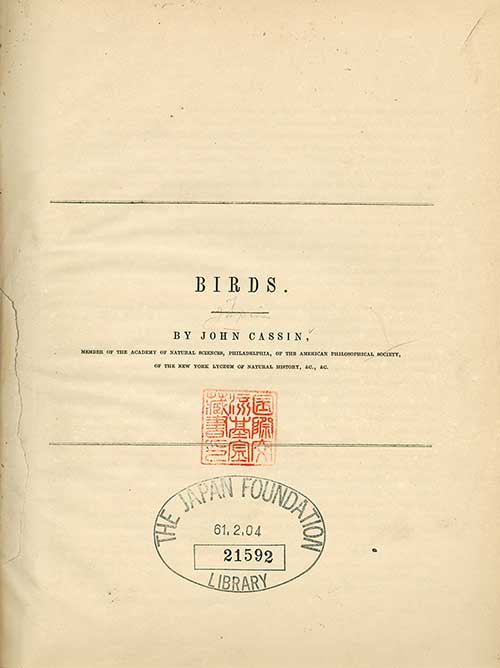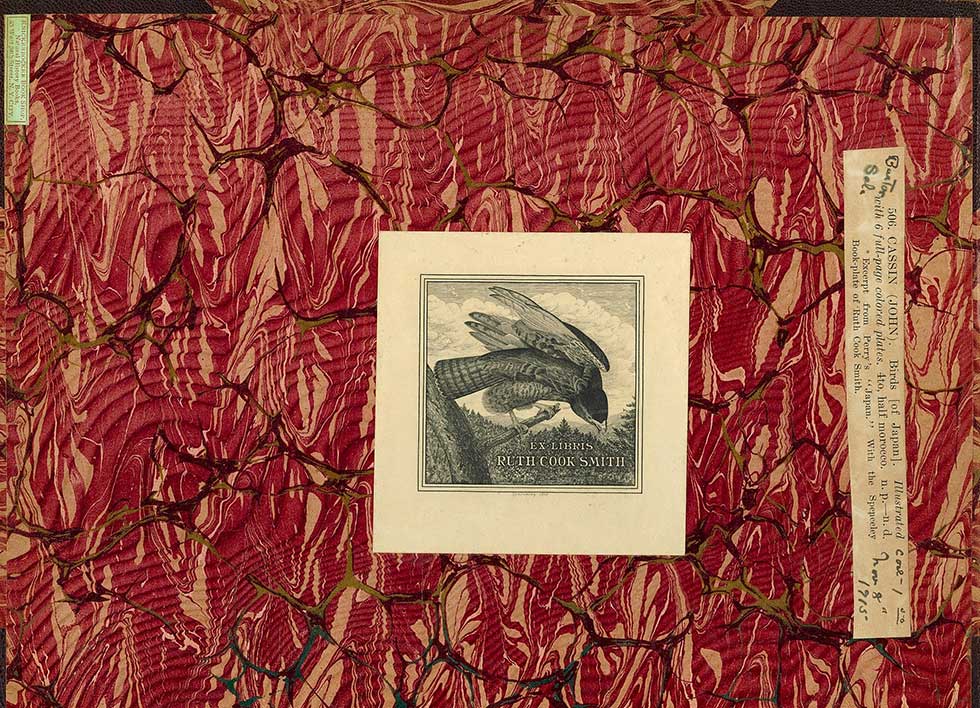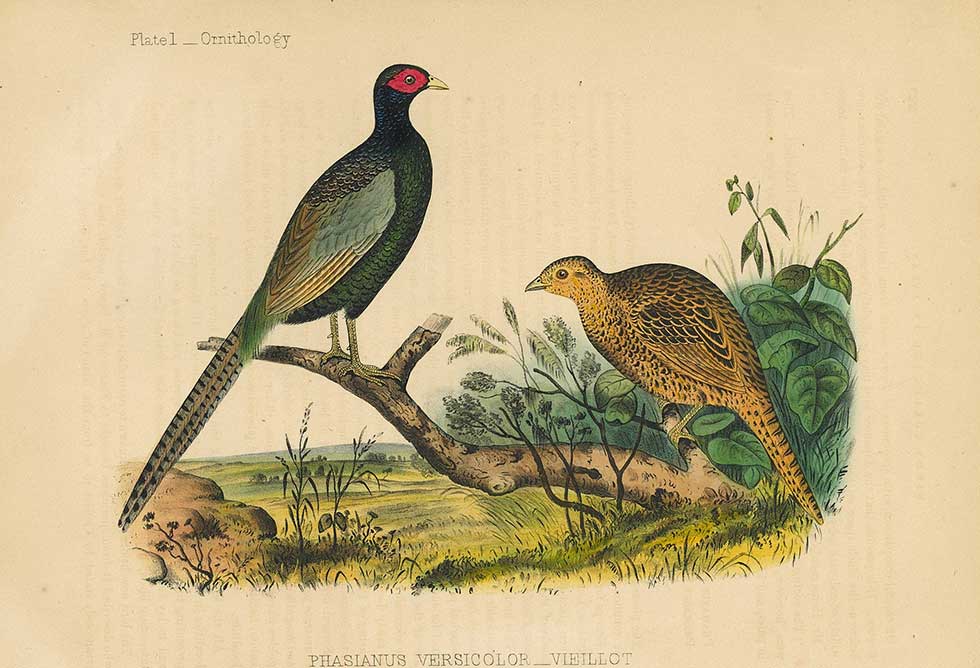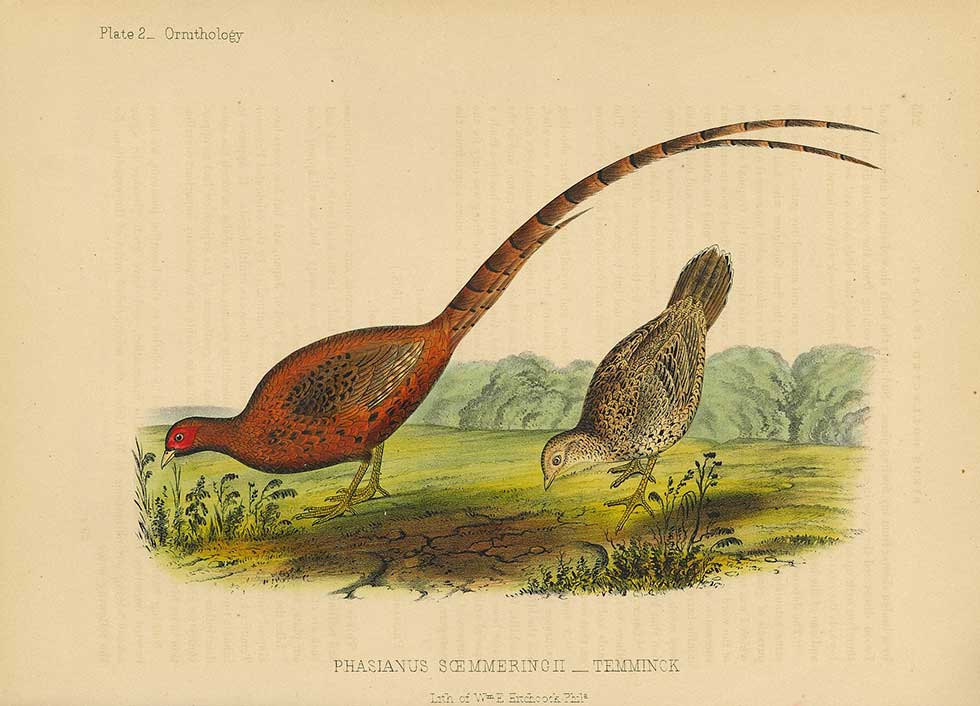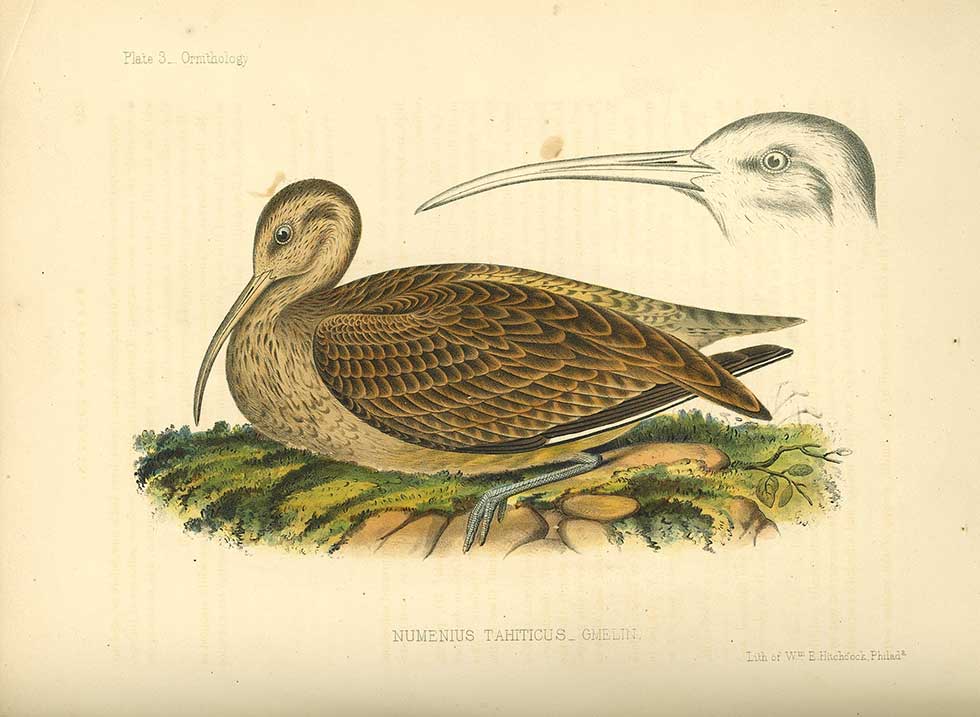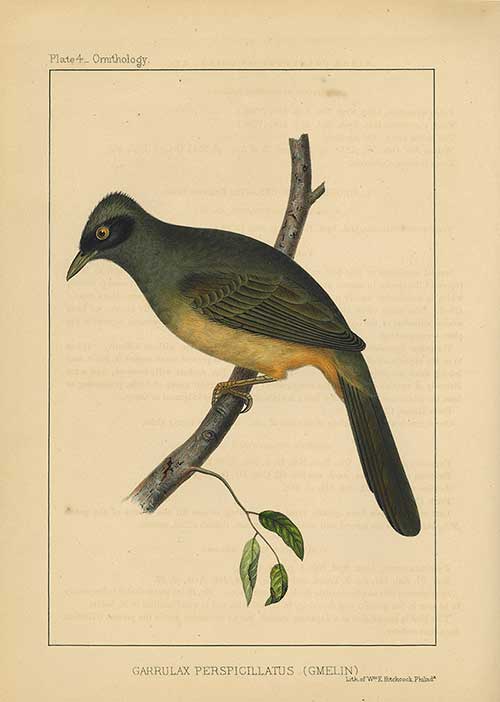Small Online Exhibition “From Our Rare Book Collection” (March 2022)
This time we are displaying online Cassin, John. Birds. [s.l.]: [s.n.], [18--?].
This book, bound with illustrations, is an excerpt of “Birds by John Cassin,” “Birds Collected in China, the Loo Choo Islands, the Islands of Singapore and Ceylon, and on the Coast of California” and "Letter Describing the Manner of Hatching Ducks in China" from the second volume of the Narrative of the Expedition of an American Squadron to the China Seas and Japan: Performed in the Years 1852, 1853, and Narrative of the Expedition of an American Squadron to the China Seas and Japan: Performed in the Years 1852, 1853, and 1854, under the Command of Commodore M.C. Perry, United States Navy, by Order of the Government of the United States, published in 1856. It is uncertain when the excerpt was written and bound, but the date can be somewhat deduced from the bookplate of Ruth Cook Smith affixed to the endpaper. The small inscription "Spenceley-1910" outside of the bookplate frame suggests the volume was probably bound in its present form before 1910. This bookplate may follow the lineage of J. Winfred Spenceley (1865-1908), a designer who represented the "golden age" of bookplate design in 19th century America.
The author of the text is John Cassin (1813-1869), an American ornithologist. Although he did not participate in Perry's expedition, he studied drawings and descriptions by Wilhelm Heine (1827-1885), an artist who accompanied the party, as well as the specimens brought back from the expedition. Cassin was from Pennsylvania and took an honorary curatorial position at the Academy of Natural Sciences of Philadelphia in 1842. During his 26 year tenure at the Academy, he devoted himself to expanding its collection of birds, which became one of the largest in the world. He published Illustrations of the Birds of California, Texas, Oregon, British and Russian America (1856), Mammalogy and Ornithology (1856), and The Birds of North America (1860), in which he reported nearly 200 new species of birds. For his achievements, several species have been named after him.
The birds reported in this book are numerous, including Japanese kite, Japanese thrush, starling, great white, wagtail, white-eye, cuckoo, pigeon, pheasant, and mountain chicken. Most of these species were recorded and collected in Hakodate (written Hakodadi). By referring to the prior research, Cassin identified the birds that matched the specimens and the expedition's records and then described their names, physical characteristics, and habitat areas. The references include Systema Naturae (1788-1793) by Johann Friedrich Gmelin (1748-1804); Index Ornithologicus (1790) by John Latham (1740-1837); Galerie des oiseaux du Cabinet d'histoire naturelle du Jardin du roi (1825) by Louis Pierre Vieillot (1748-1830); Fauna Japonica (1833-1850) by Coenraad Jacob Temminck (1778-1858), Hermann Schlegel (1804-1884) and Wilhem De Haan (1801-1855). He often quoted the text in the artist Heine's diary to explain the environment and conditions under which the expedition encountered the birds.
The exquisite illustrations are lithographs by William E. Hitchcock (1822-1906) and contain elaborate and realistic depictions with vivid colors. Hitchcock, like Cassin, was a Pennsylvanian lithographer and worked on Cassin's other books and ornithologist John James Audubon's The Birds of America (1827-1839). In the chapter "Birds," Hitchcock inscribed the Latin name of the bird and the author's name of the reference used by Cassin and put his signature at the bottom of the illustrations. It is fair to assume that his lithographs are based on the illustrations of the reference books and Heine's drawings.
The Narrative of the Expedition recorded birds, fish, shellfish, and plants in a chapter entitled "Natural History of Japan." Our book, which extracted and bounded the pages regarding birds, demonstrates a deep interest and attachment to birds. The choice of a hawk for the bookplate illustration encourages readers to guess that Smith, the book's owner, may have been a bird enthusiast and adapted the book to its present form. The "Birds" is a fascinating work not only for its content and a description of the ecology of birds in late 19th century Japan but also for the process of its physical formation.
[Contact Us]
The Japan Foundation
Library
Tel: +81-(0)3-5369-6086 Fax: +81-(0)3-5369-6044
E-mail: Lib@jpf.go.jp
(When sending an e-mail, please replace the full-width "@" character with a half-width "@" character.)
- About Us Top
- About the Japan Foundation
- Donations
- News & Topics
- News & Topics Top
- Main Activities
- Main Activities Top
- Fiscal Year 2025-2026
- Fiscal Year 2024-2025
- Fiscal Year 2023-2024
- Fiscal Year 2022-2023
- Fiscal Year 2021-2022
- Fiscal Year 2020-2021
- Fiscal Year 2019-2020
- Fiscal Year 2018-2019
- Fiscal Year 2017-2018
- Fiscal Year 2016-2017
- Fiscal Year 2015-2016
- Fiscal Year 2014-2015
- Fiscal Year 2013-2014
- Events / Projects
- Press Release
- Press Release Top
- Fiscal Year 2025-2026
- Fiscal Year 2024-2025
- Fiscal Year 2023-2024
- Fiscal Year 2022-2023
- Fiscal Year 2021-2022
- Fiscal Year 2020-2021
- Fiscal Year 2019-2020
- Fiscal Year 2018-2019
- Fiscal Year 2017-2018
- Fiscal Year 2016-2017
- Fiscal Year 2015-2016
- Fiscal Year 2014-2015
- Fiscal Year 2013-2014
- Links

